Having two parents with opposing views of the arts has not always been easy for me. My mom, who used to teach at a traditional Javanese dance school founded by her late father, understandably has a strong artistic calling. She taught me how to sing and at one point she also tried to teach me a simple Javanese traditional dance. My dad, on the other hand, always emphasized the importance of science when I was a kid, and unlike my mom, he couldn’t really appreciate the arts (and to some extent, he still can’t).
When I grew up, I often drew logos, emblems and random shapes during classes, resulting in the last few pages of my notebooks being full of doodles and sketches. There was even a time when out of nowhere I got the idea of creating a short comic book – about planets and aliens, no less – filled with my abstract drawings. During my college years in Bandung, I realized that the urge to express my ideas through art has always been there, though it was often suppressed by my conscious decision to pursue engineering (yet my career so far has been mostly in the financial industry). However, it was also in Bandung that I realized how much I enjoyed the arts – going to art museums, creating poems, or appreciating the artistic direction of a movie by watching it more than a dozen times.
This shouldn’t have come as a surprise, really, for Bandung has always been one of Indonesia’s art hubs alongside Yogyakarta (also known as Jogja). On a trip to the latter four years ago, I learned the difference between the two; while the School of Jogja put more focus on realism and expressionism, the School of Bandung tends to lean heavily toward modernism and formalism. This is due to the unique characteristics of each city’s artistic scene: Yogyakarta has always been a city of traditional artists, while Bandung with its Universitaire Leergang voor de Opleiding van Tekenleraren was more influenced by Dutch creatives. Today both cities still host two of Indonesia’s leading institutions for artistic learning: Institut Seni Indonesia (ISI) Yogyakarta and the Faculty of Visual Arts and Design (FSRD) of Institut Teknologi Bandung (ITB).
Coincidentally, I have deep personal connections with both Jogja and Bandung. Jogja is where my maternal grandparents were from and it was a favorite destination for outings when I was in high school – not to mention its plethora of beautiful centuries-old Hindu and Buddhist temples which helped pique my interest in ancient art. On the other hand, Bandung was the city where I spent my college years, and through my new friends I discovered a small part of its exciting cultural scene.
One venue I recall visiting is Galeri NuArt, an art gallery tucked amid a luxury residential area in the western part of Bandung. Showcasing the works of I Nyoman Nuarta, a high-profile Balinese sculptor who graduated from ITB, the three-hectare premises offered me an alternative respite from the city’s hustle and bustle. Several years later, I returned to this place only to find it in a sad state; rainwater seeped in through parts of the main gallery’s ceiling, and the lighting was not functioning properly at some of the installations.
However, earlier this year I went for the third time and was pleasantly surprised by its condition today. The main gallery had been expanded, the lighting was flawless, the collection was displayed in a much better and more organized way, and the restaurant also got an upgrade. At the main lobby of what is now called NuArt Sculpture Park, a handful of replicas of Bali’s Garuda Wisnu Kencana – Nuarta’s biggest and most ambitious project which was completed 28 years after its inception – welcomes visitors and provides the general public with information on what has now become the tallest statue in Indonesia. Outside his native island, his works also adorn a busy intersection and the National Museum Jakarta, as well as the gateway to the city’s main international airport.
Another prominent figure whose gallery has long been a part of Bandung’s cultural scene is Sunaryo Soetono. Also an ITB graduate, this artist who hailed from Banyumas in Central Java has been running Selasar Sunaryo, a compact art gallery in the highlands of northern Bandung, for more than 20 years. For some reason I had never been there until mid-February this year, when together with James I explored some of Bandung’s finest and most intriguing art spaces. However, as our visit coincided with the peak of the rainy season, we had to navigate our way through the city in accordance with the weather.
We arrived at Selasar Sunaryo during a torrential downpour, which was a real nuisance at first but ended up being a blessing for it allowed us to have the place all to ourselves. When the rain thinned, we entered a tunnel made from bamboo which was inspired by bubu (traditional fish traps). However, instead of fish this installation called Lawangkala (in Javanese lawang means door and kala means time) trapped visitors, and made us explore its length with no possibility of going back, symbolizing our own lives which can’t be put on rewind. Urip ki mung mampir ngombe, literally “in life we only stop by to drink”, is what its creator told people about the essence of living, a sobering reminder of our impermanence. A digital projection of a river in the second half of the tunnel with soothing ambient traditional music visualized this philosophy.
Also located on the northern outskirts of Bandung, a peaceful and verdant area perfect for contemplating and seeking inspiration, is Lawangwangi Creative Space. The brainchild of Andonowati, an associate professor at ITB’s Faculty of Mathematics and Natural Sciences who also has a big interest in art, the facility was created to promote Indonesian artists to a broader audience while developing their unique, intrinsic qualities. Unfortunately, at the time of our visit the main gallery was off-limits since preparation was underway for an upcoming art exhibition, forcing us to head directly upstairs where a cozy restaurant enjoyed a sweeping view of the nearby hills and Bandung itself.
Still in northern Bandung, a smaller and newer art gallery called Orbital Dago was our destination the following day. As was the case at Selasar Sunaryo, we were welcomed by heavy rain upon arrival. Started by Jakarta-native Rifky Effendy, another ITB alumnus who has been working as an art curator for years, the gallery shares space with a café he and his wife created for their friends to hang out in. The artwork displayed here during our visit was whimsical, otherworldly, and rather difficult for the general public to understand. But that’s exactly what makes Bandung an appealing place for artists – unlike in Jakarta where there’s more pressure to sell, Bandung’s artistic environment allows them to go on a more experimental path.
While independent art galleries have been springing up all over Bandung, the municipal government also took an interest in art development by building a one-stop center for creativity incubation and exhibitions in the eastern part of the city. Dubbed Bandung Creative Hub (BCH), the uniquely-shaped building is equipped with a coworking space, a library, an auditorium, an exhibition space, and classrooms for photography and animation, among other things. Its corridors are adorned with colorful characters from Sundanese mythology, as well as more modern creations. However, from my observation this state-of-the-art facility seemed to be underused and later, after the trip, I learned about deeper problems involving the management of BCH.
Despite this, Bandung is definitely a long way ahead of other Indonesian cities when it comes to the local art scene – Jogja probably won’t agree with this, and rightfully so, but that’s another story – and it has certainly set a good example for the country’s art development since many artists must thrive with minimal support from the government or no help at all. That’s one of the reasons I’m proud to have once called Bandung home.
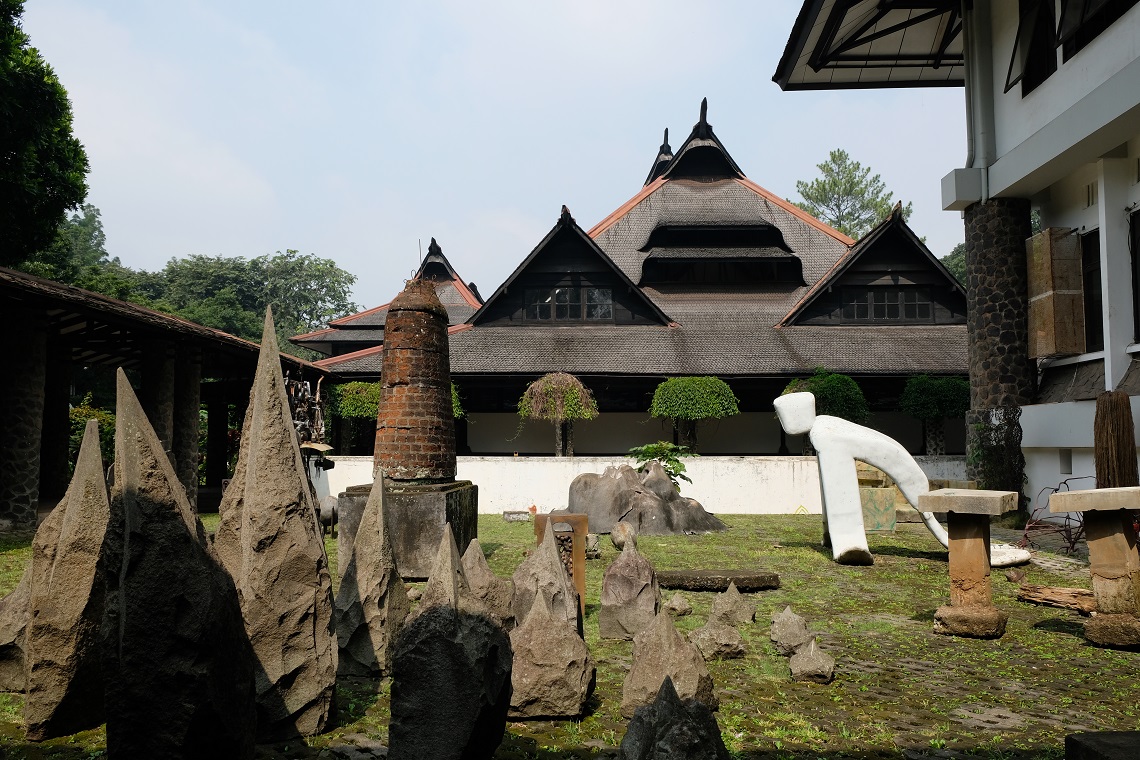
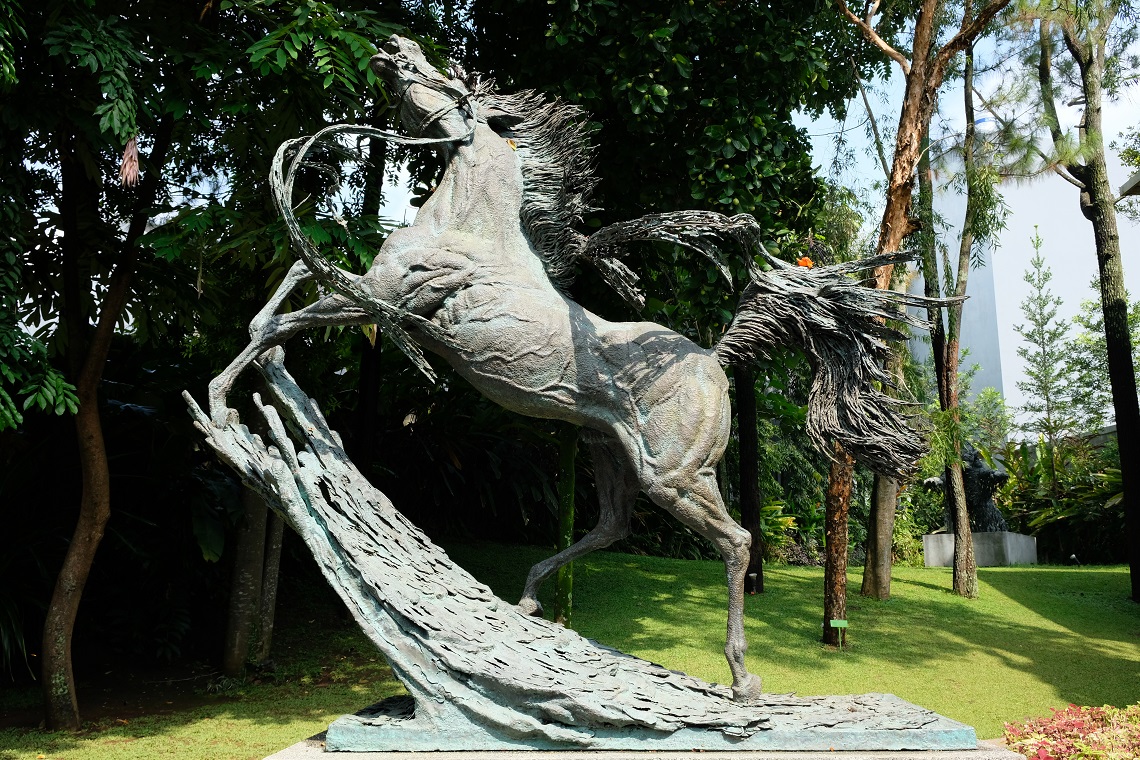

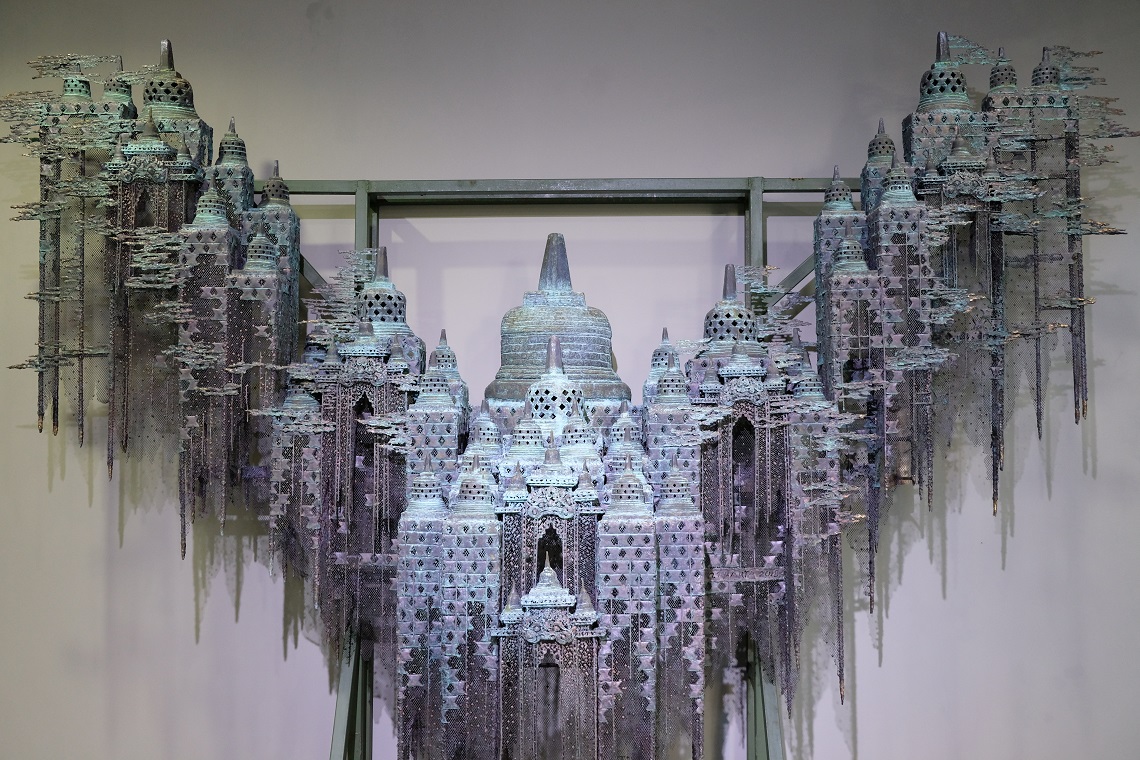
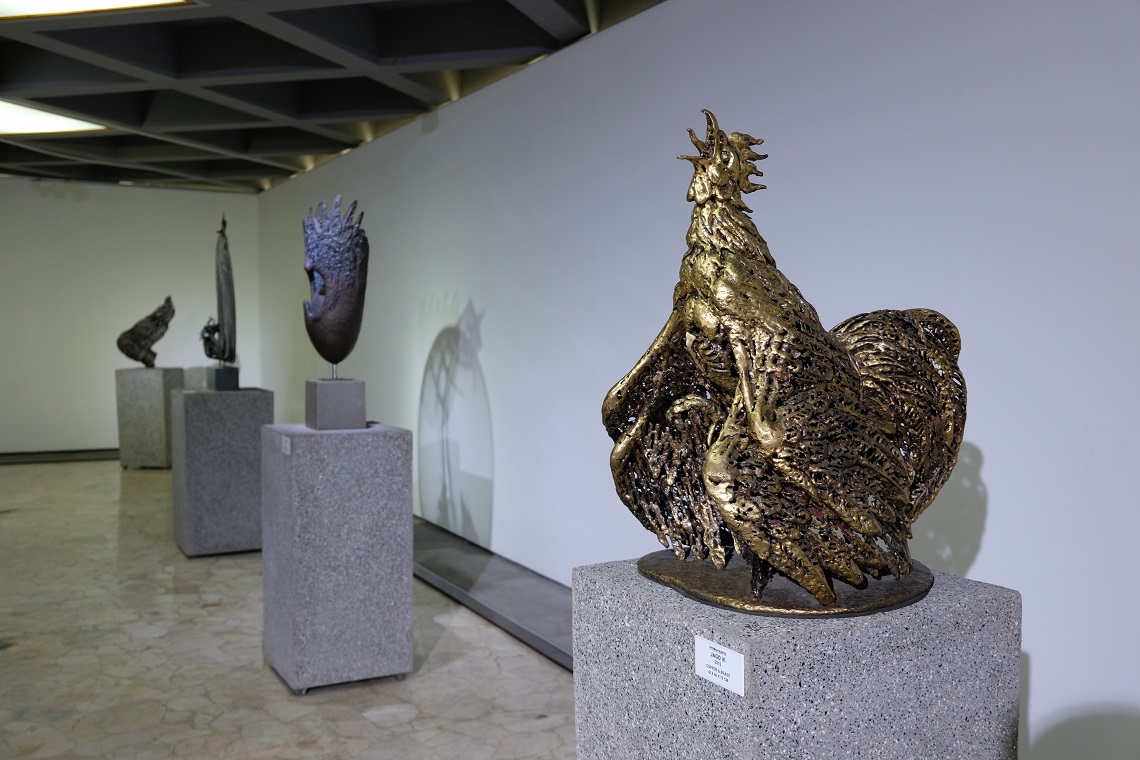
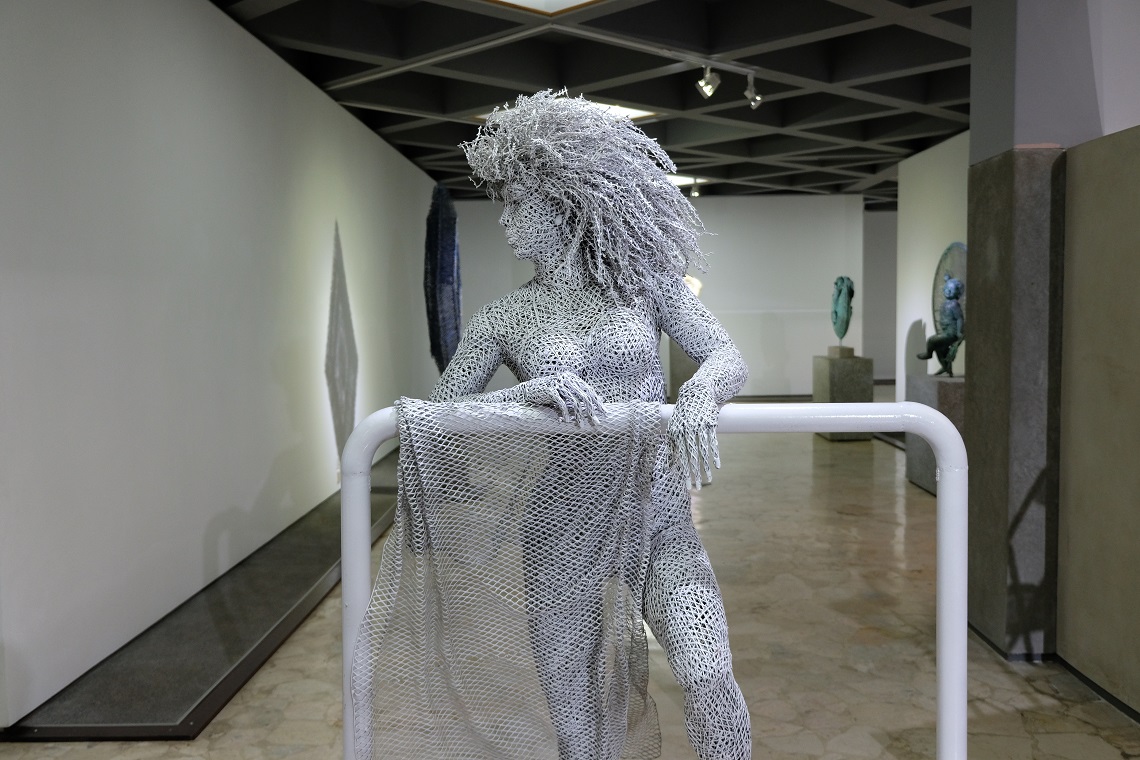
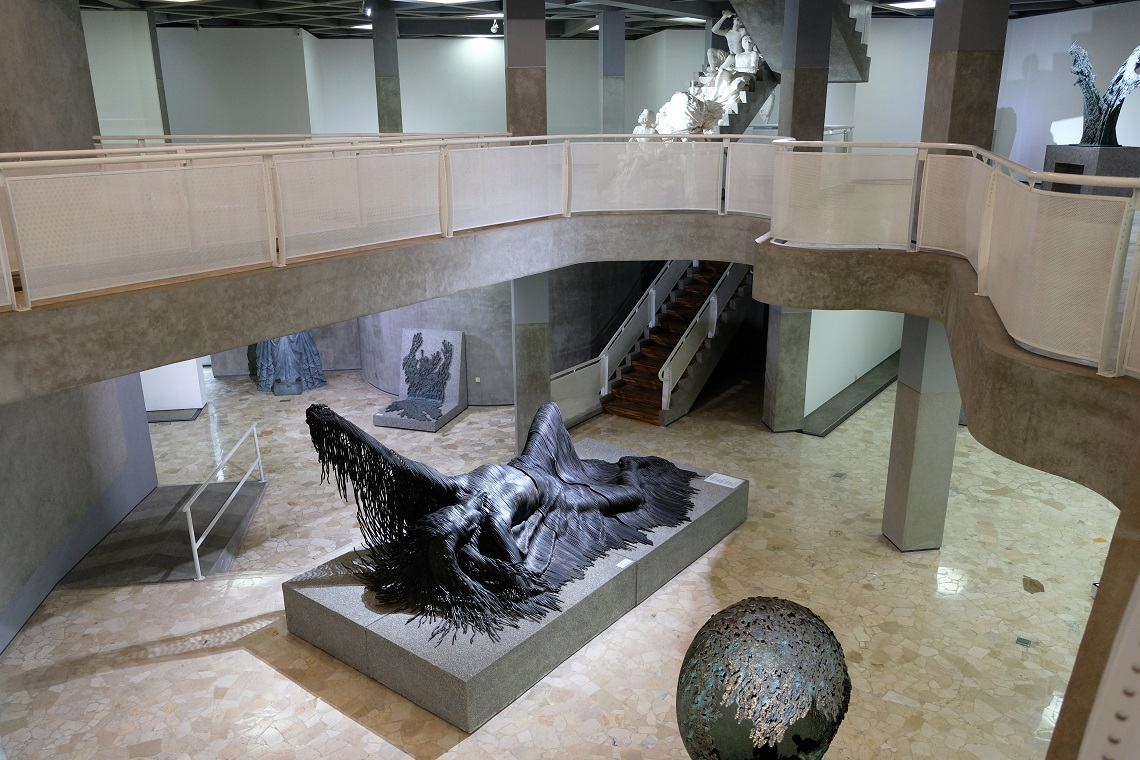
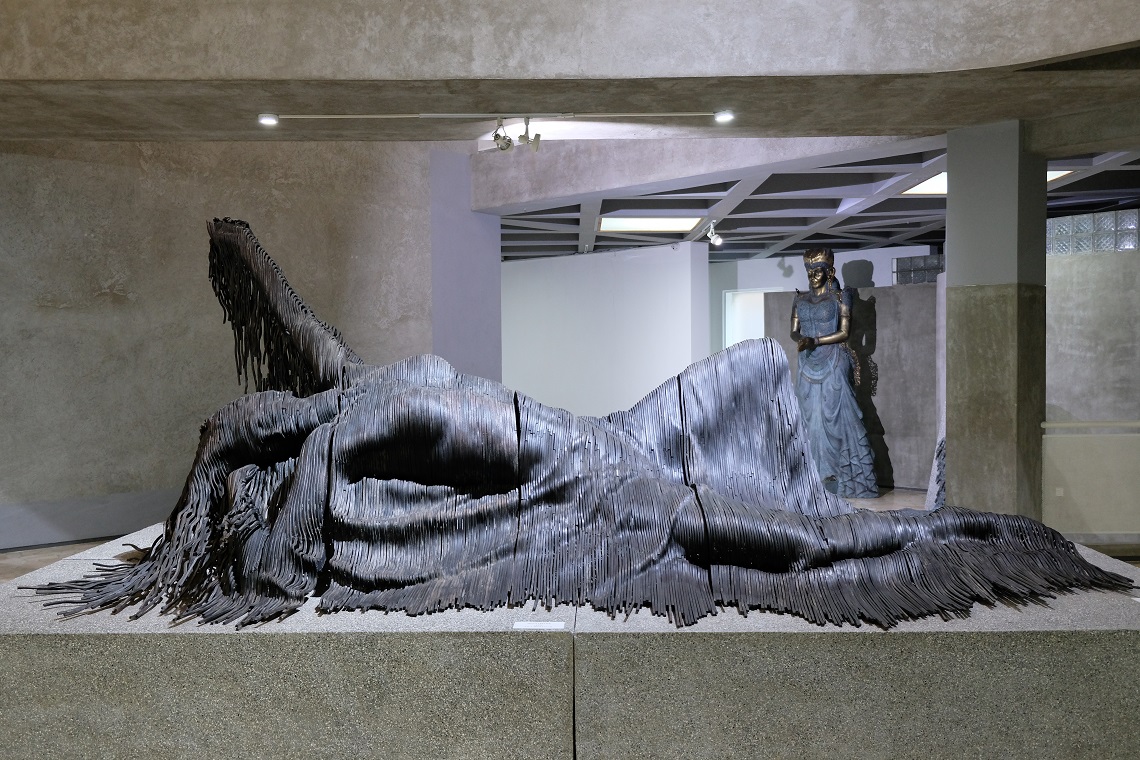
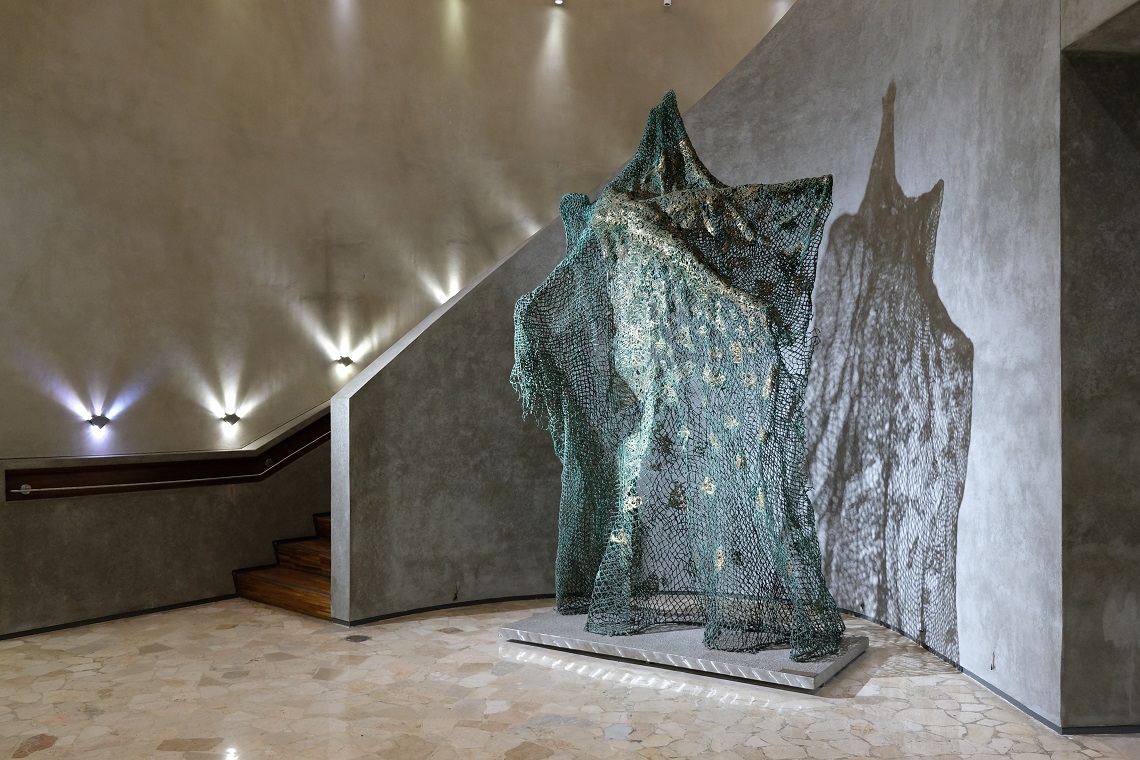
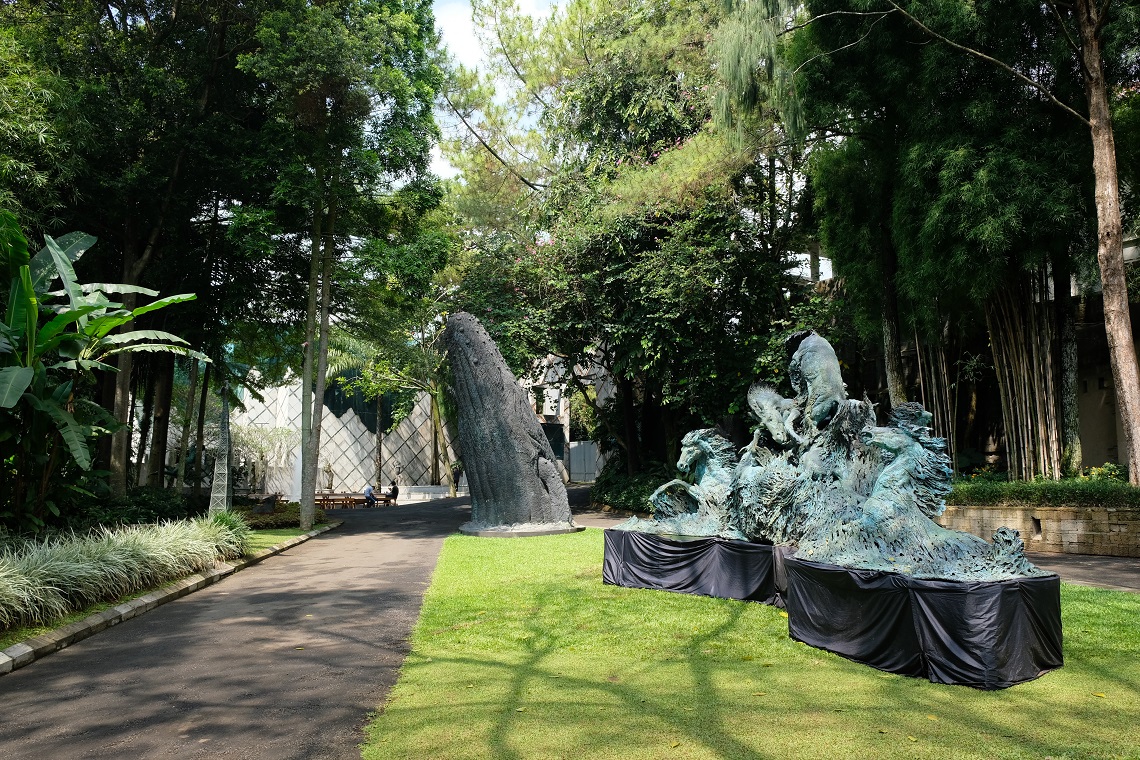
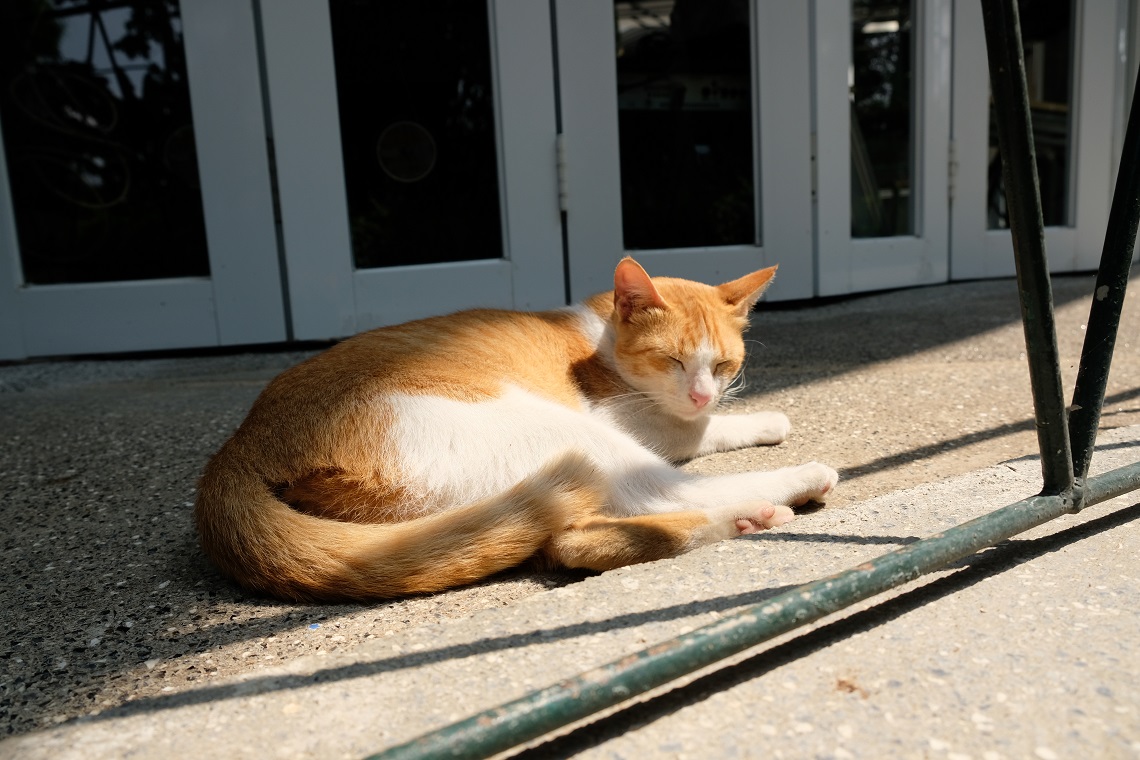
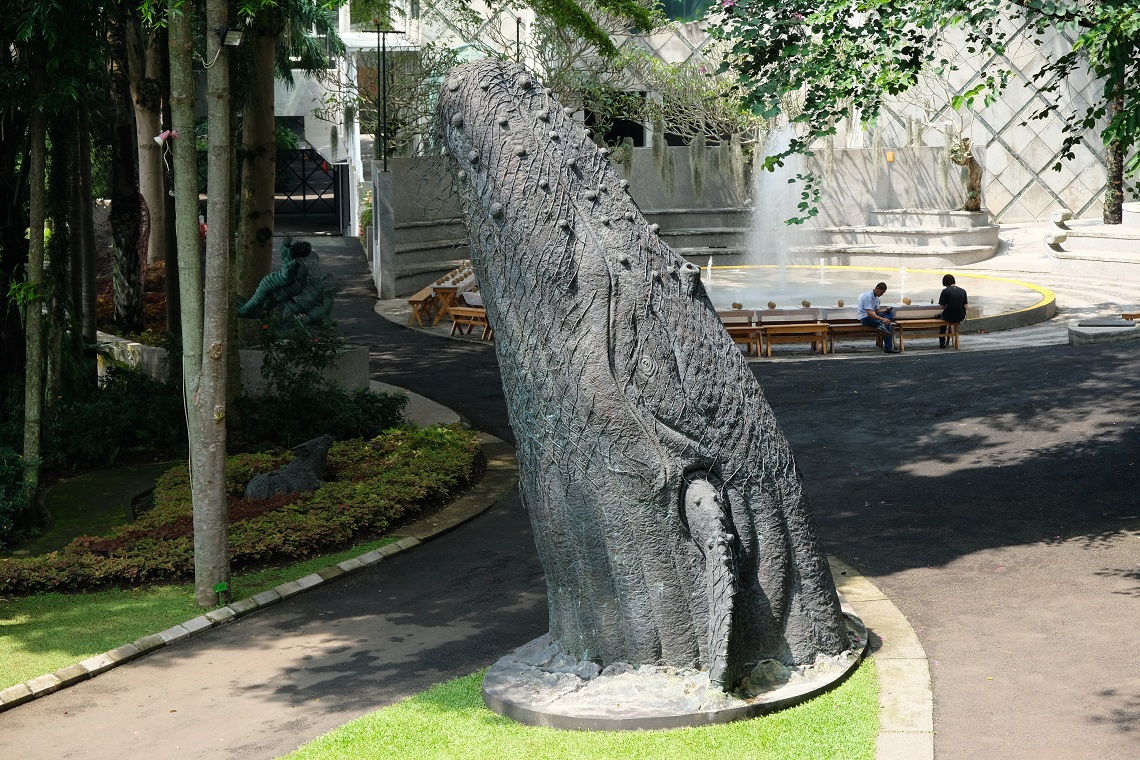

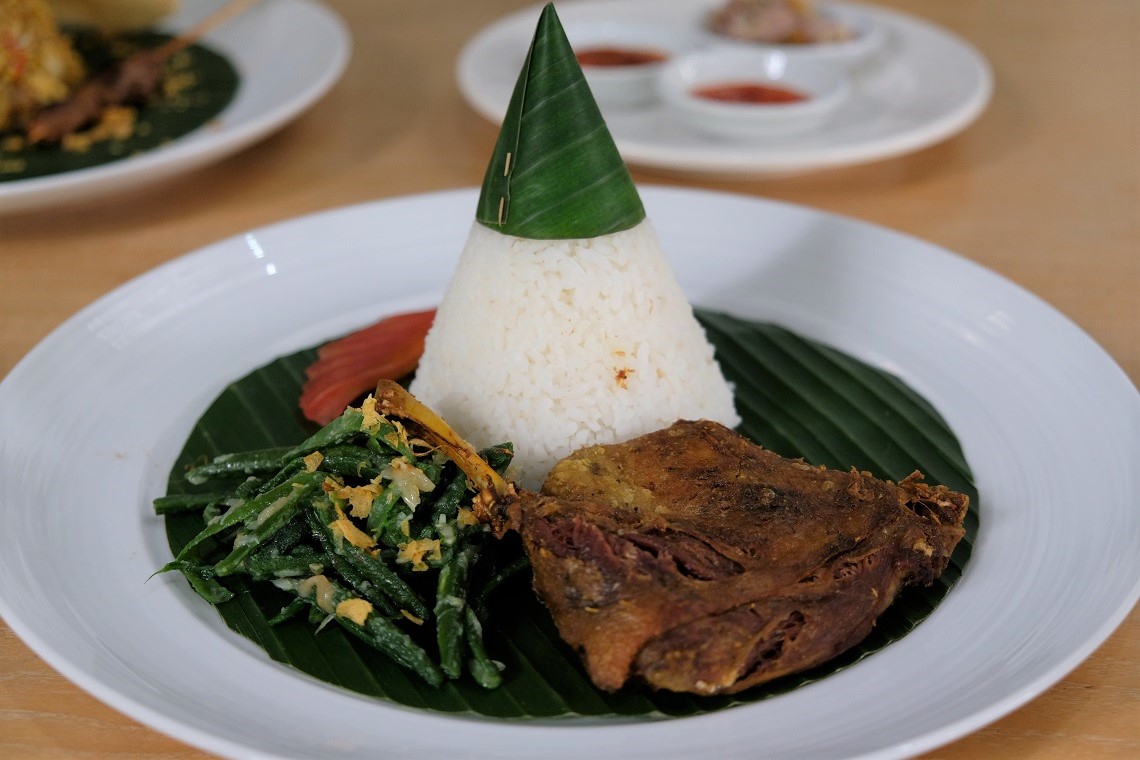

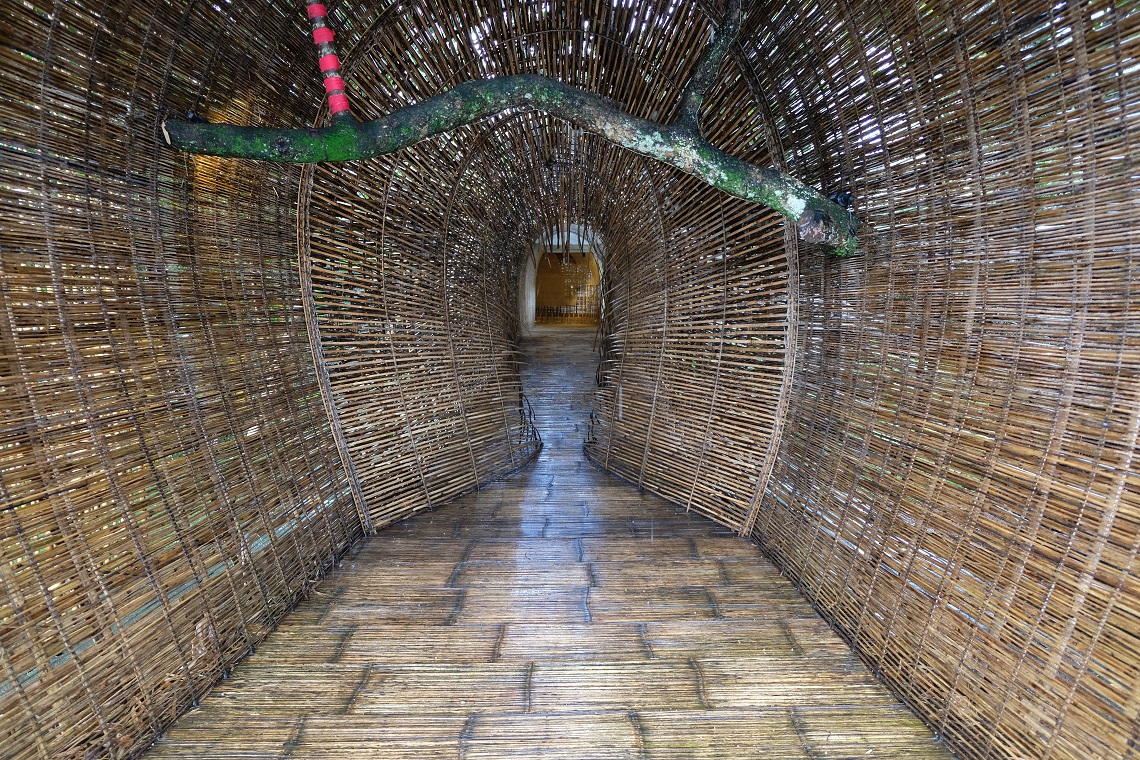
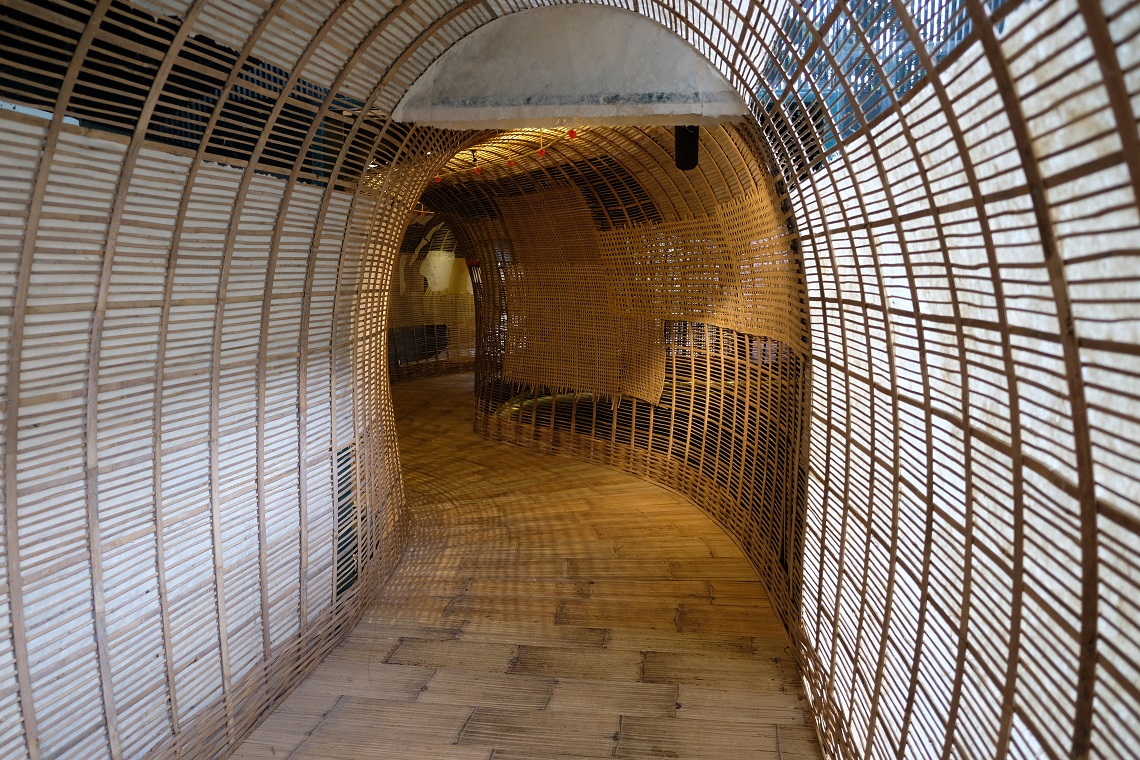
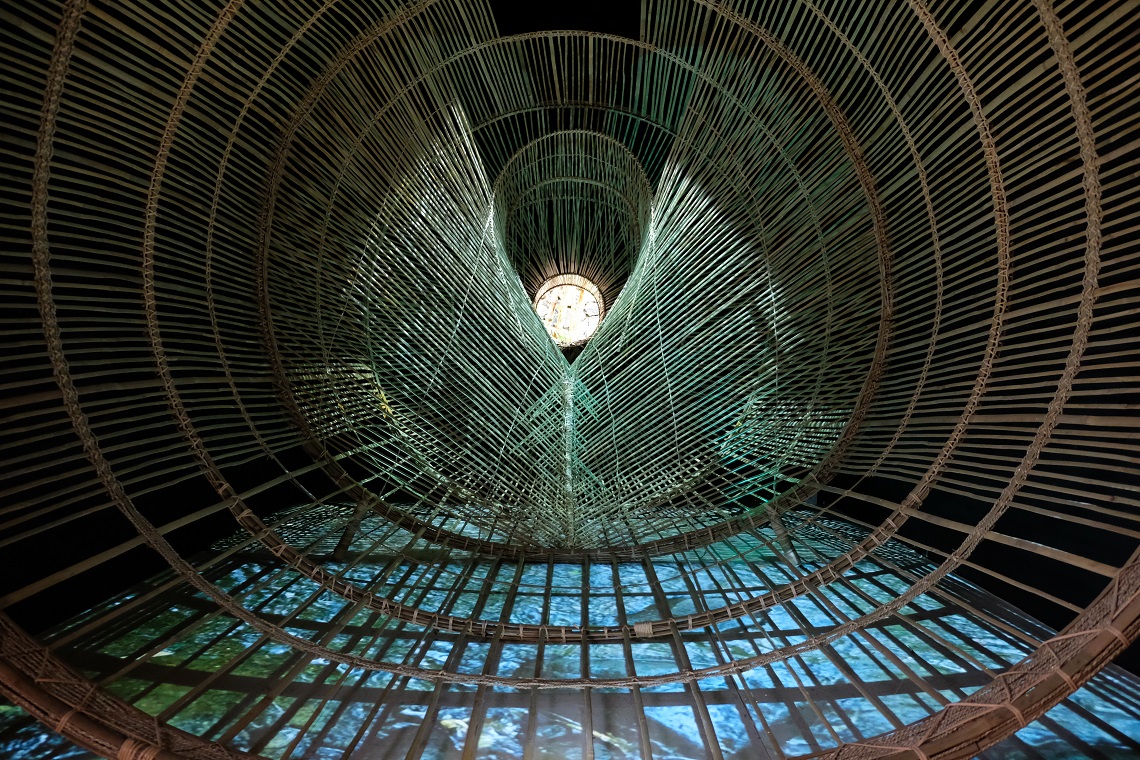
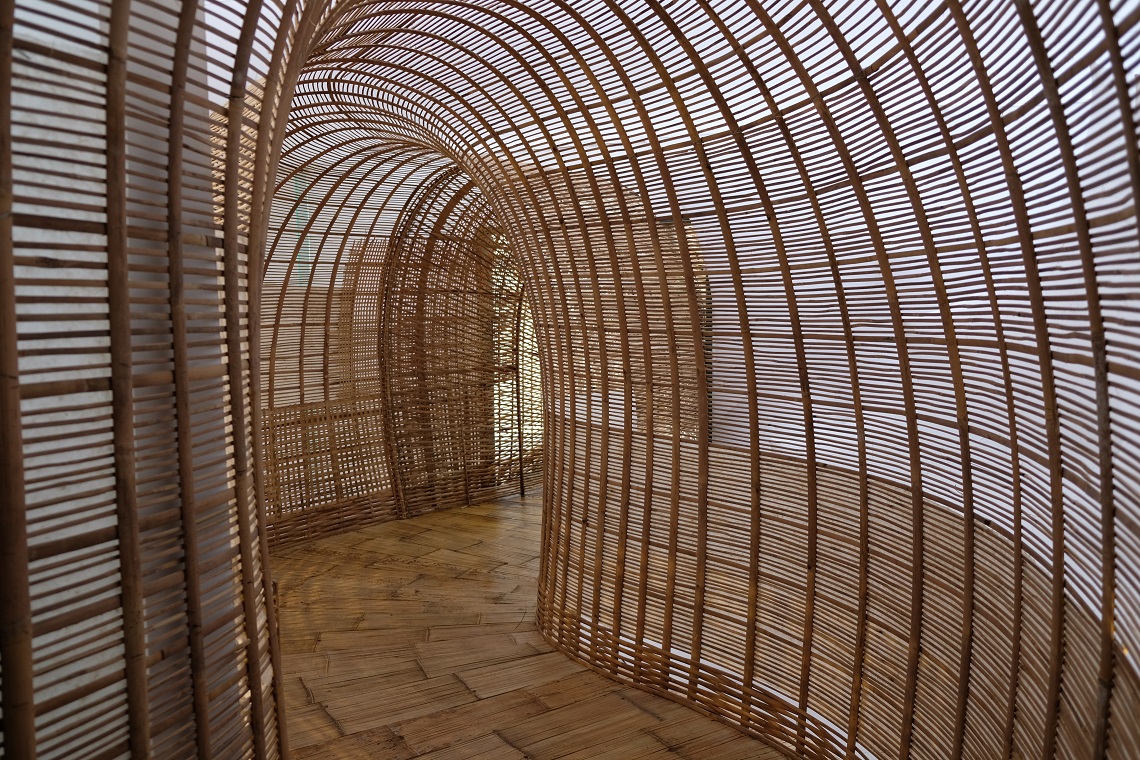


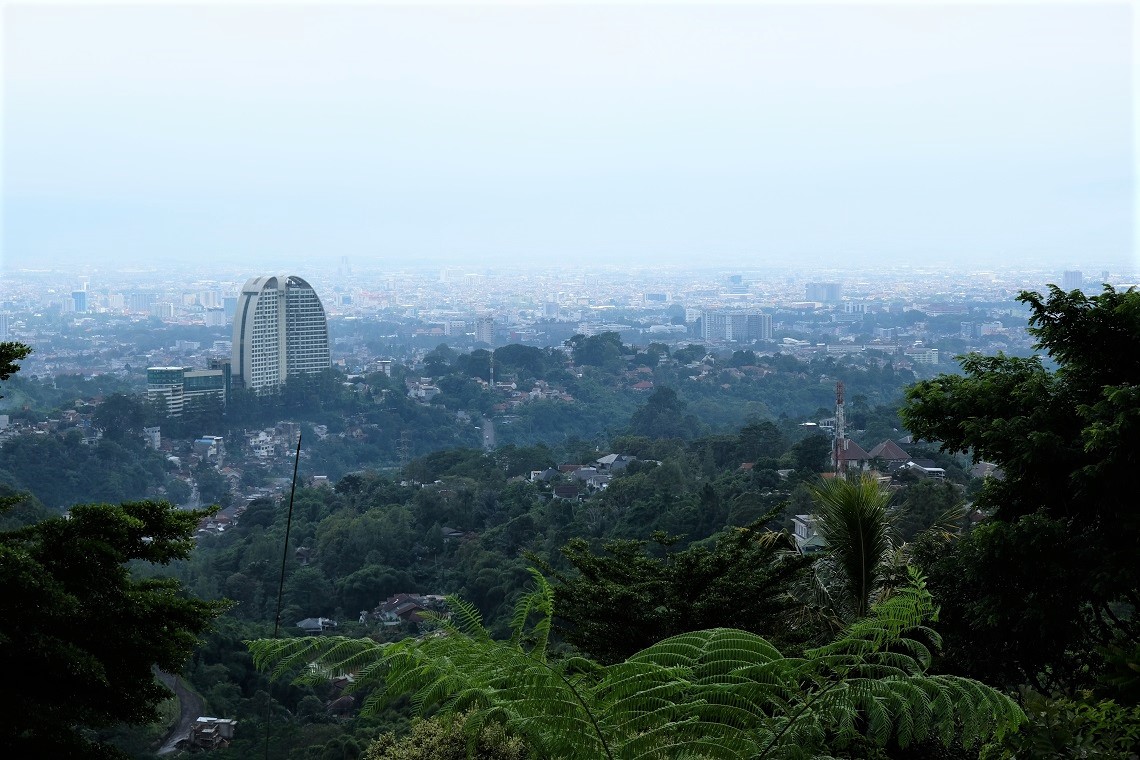
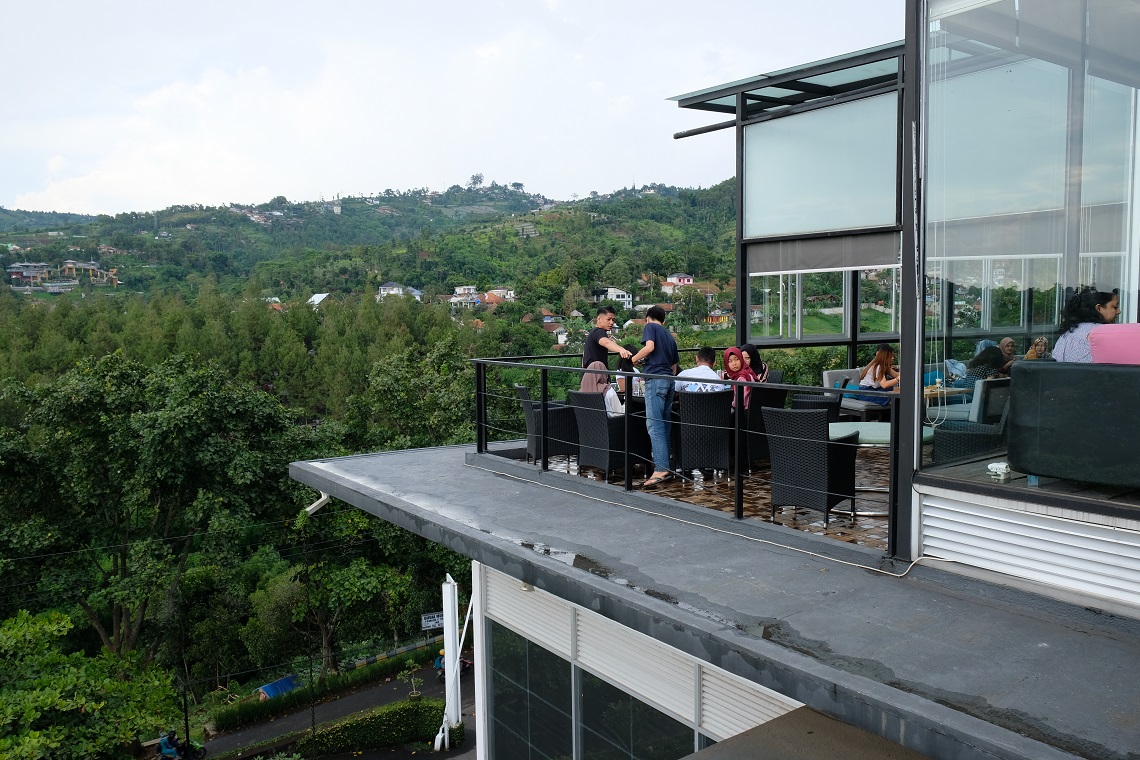
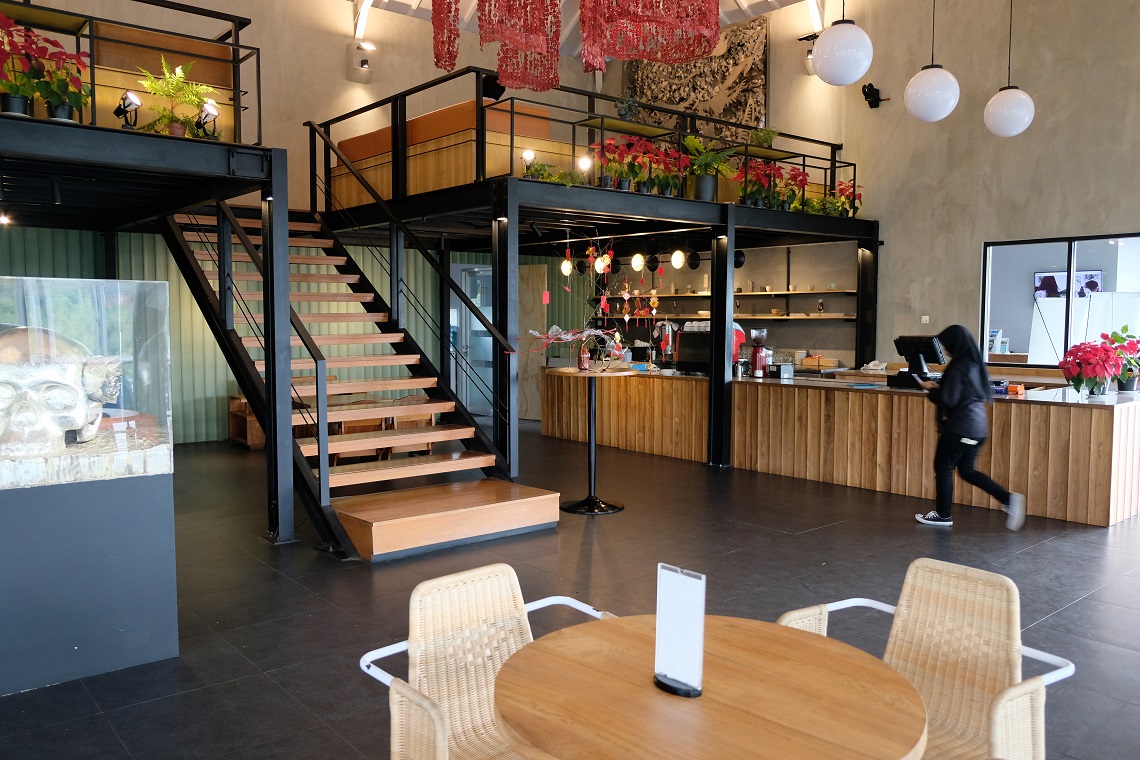
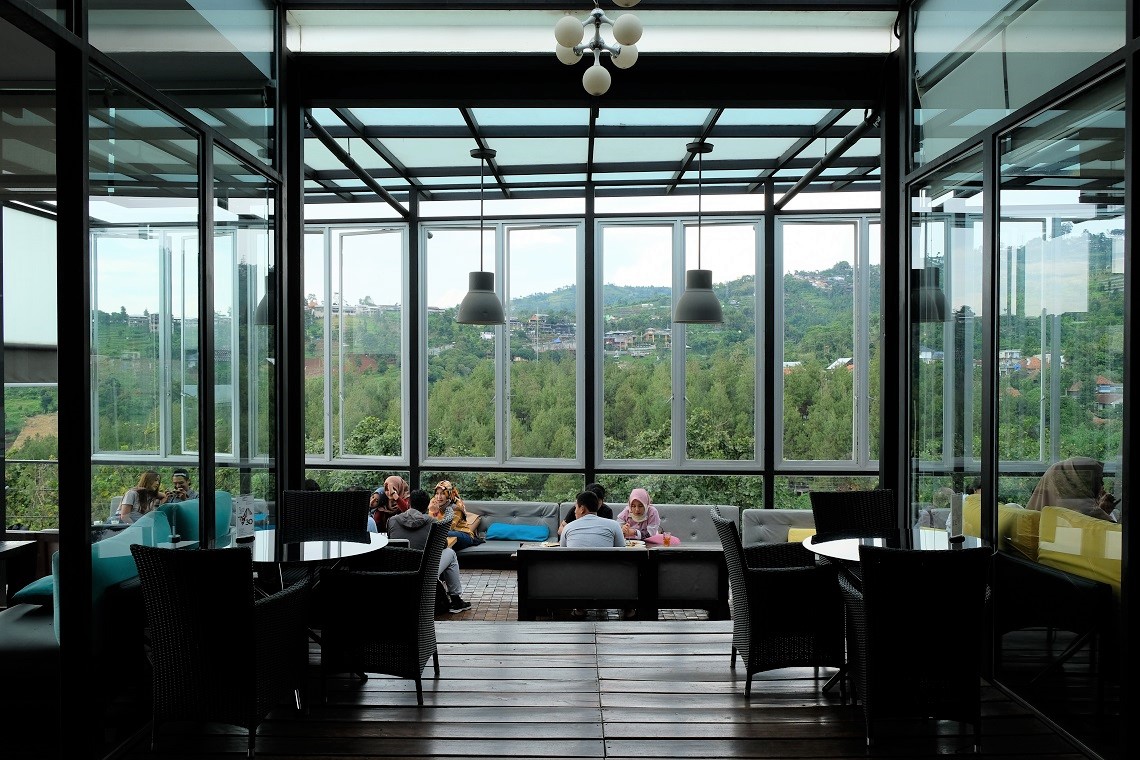
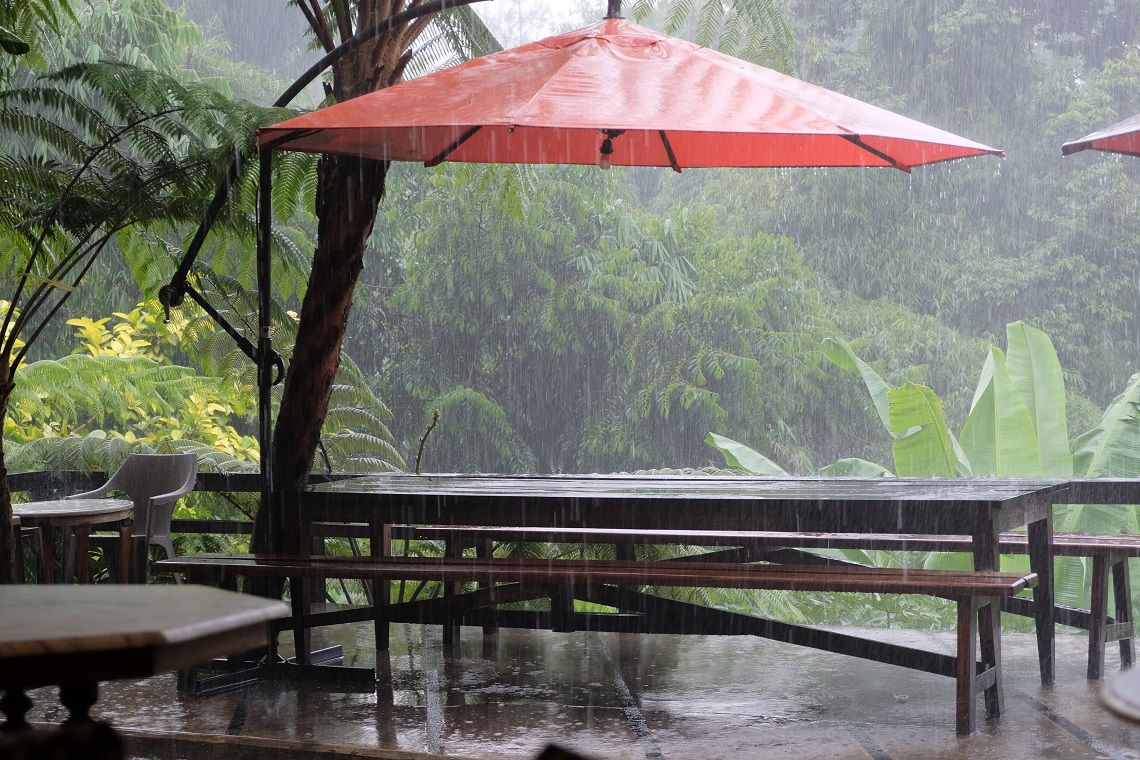
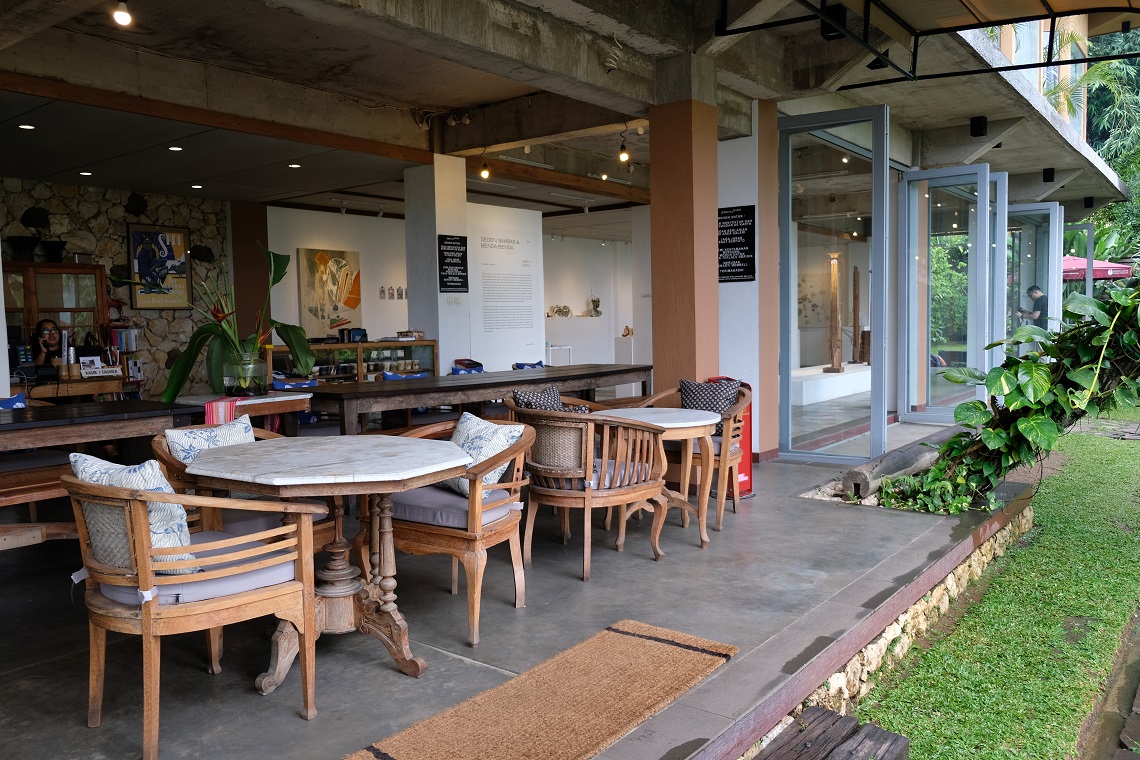
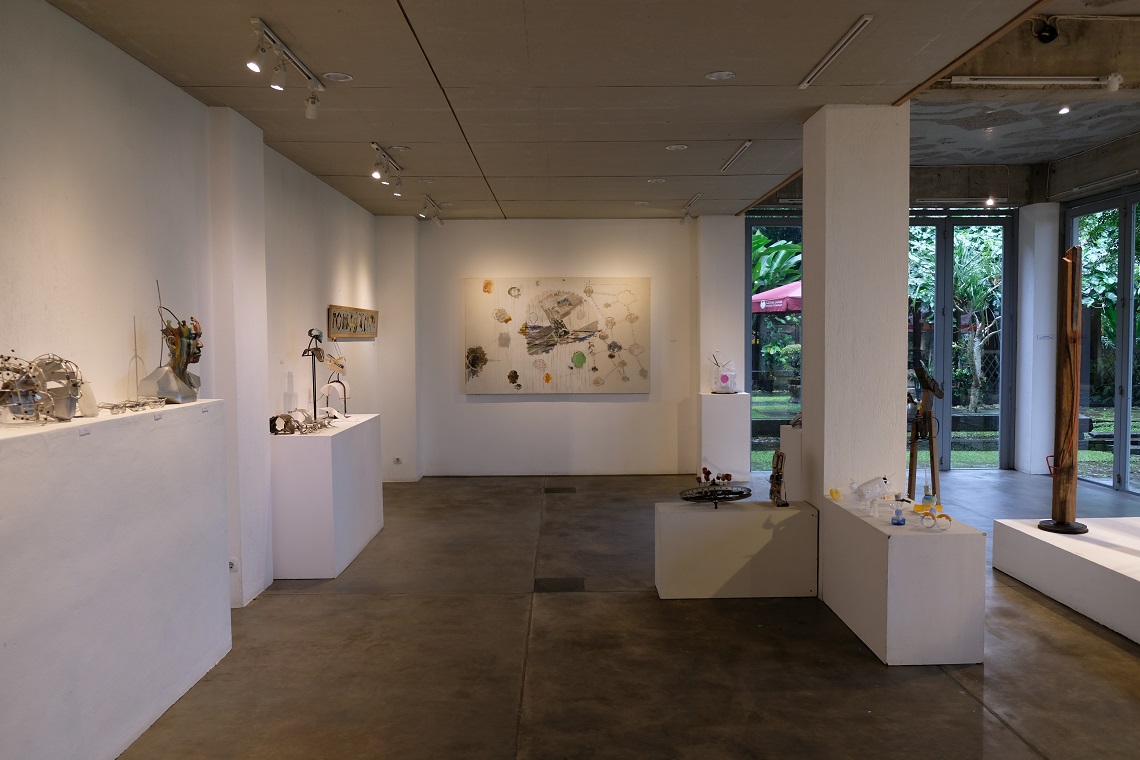
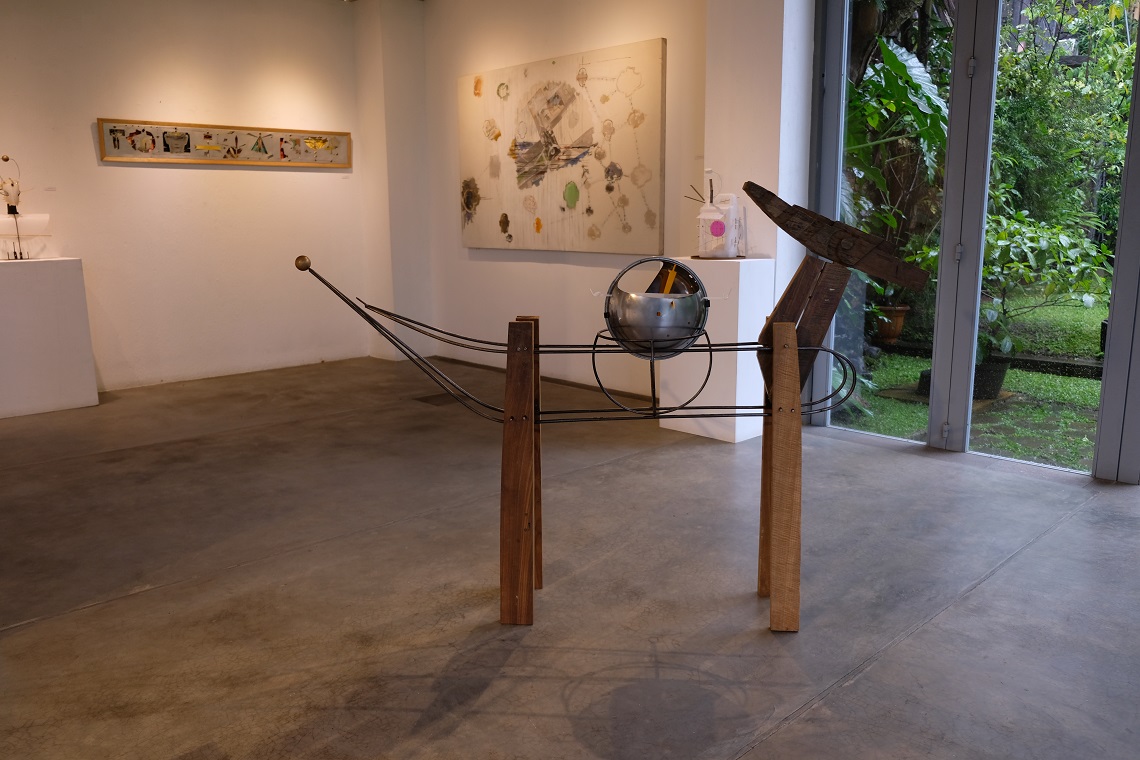

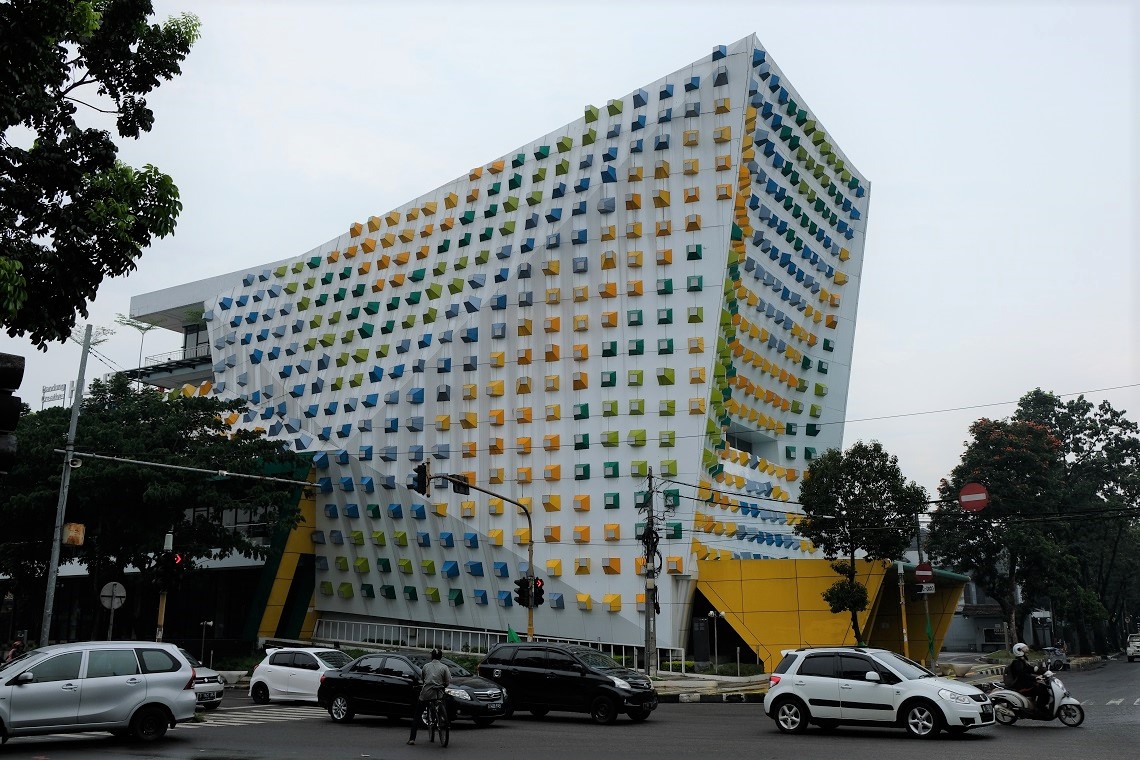
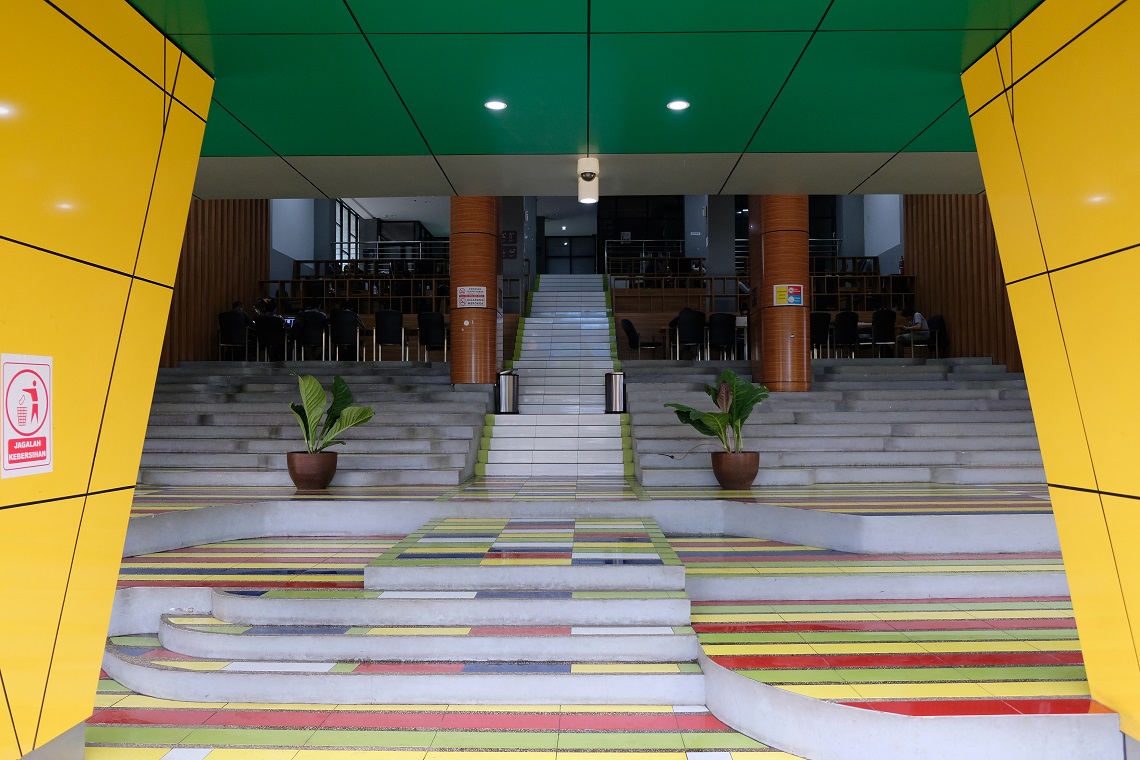

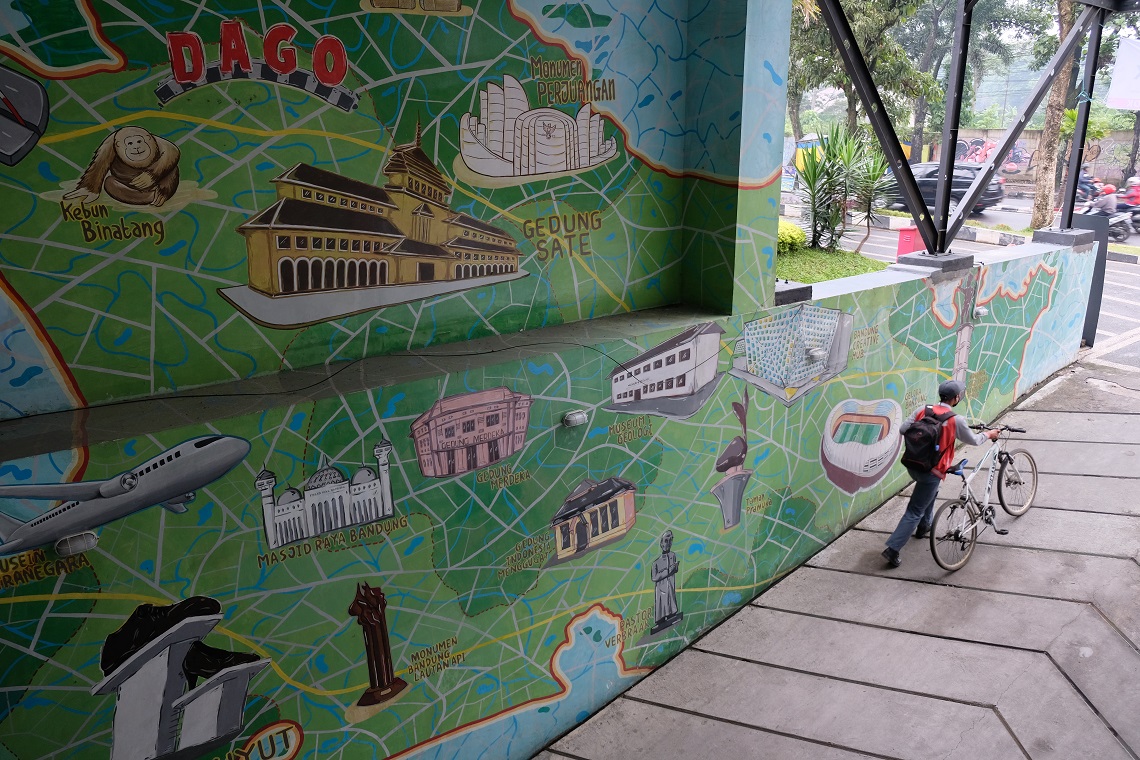
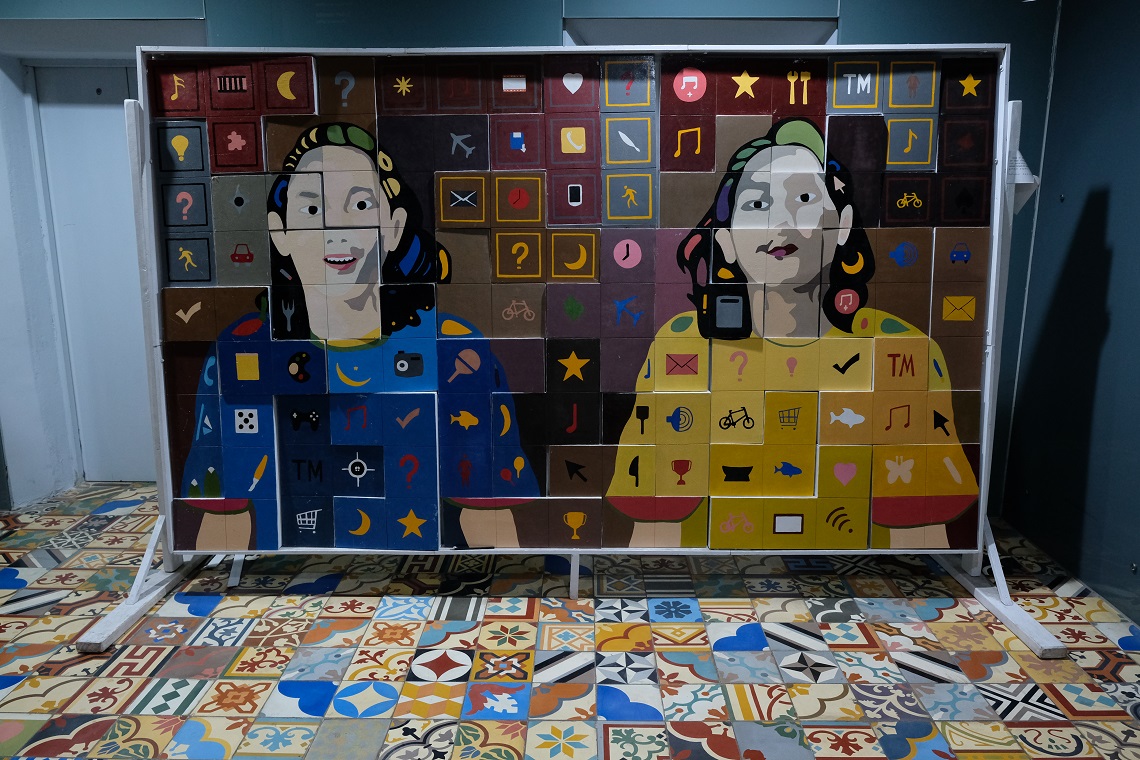
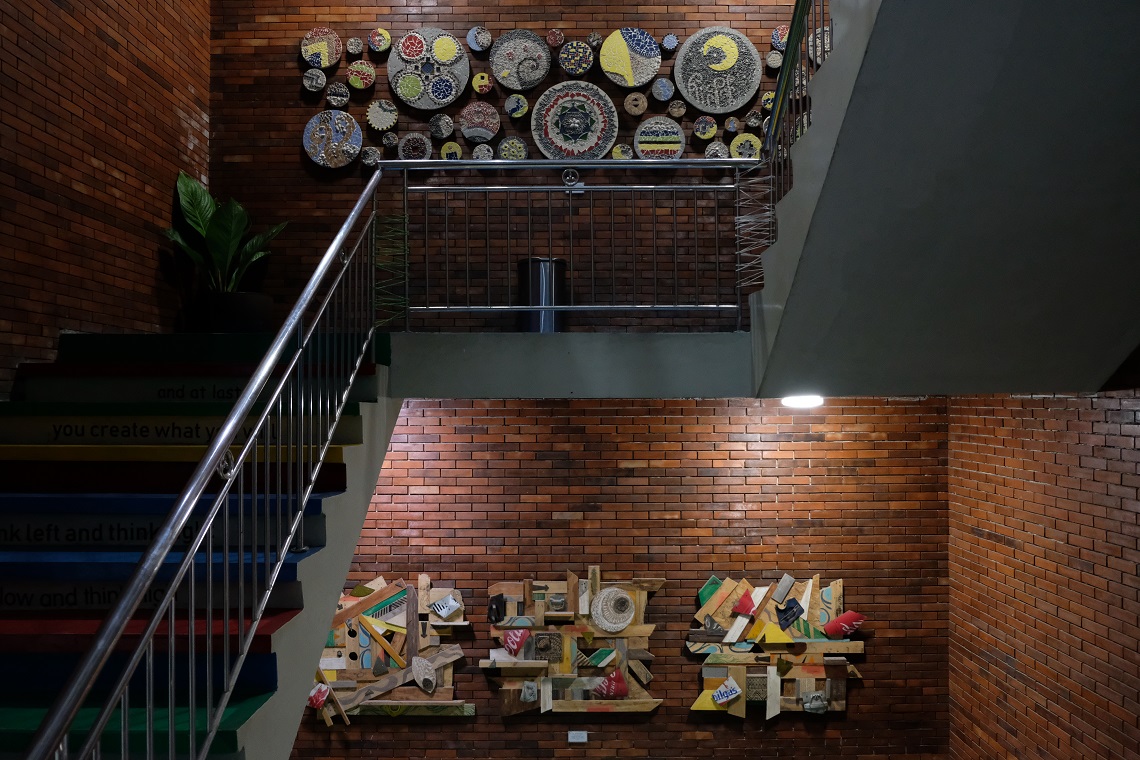
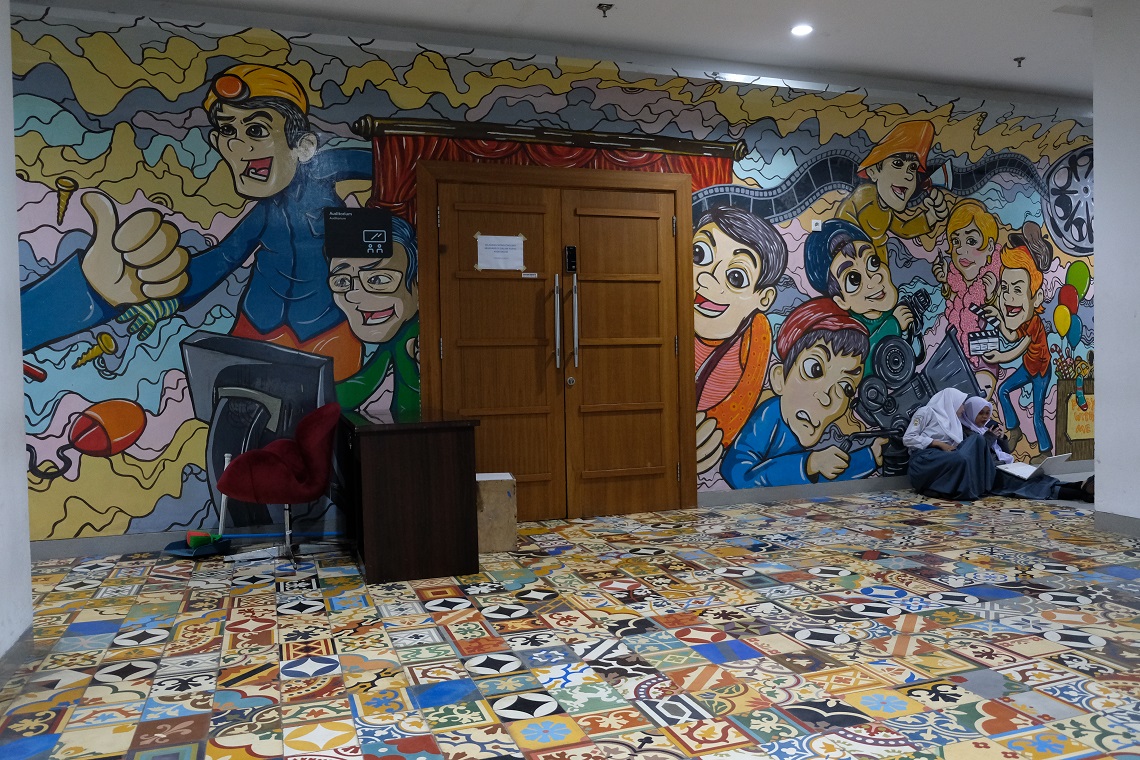

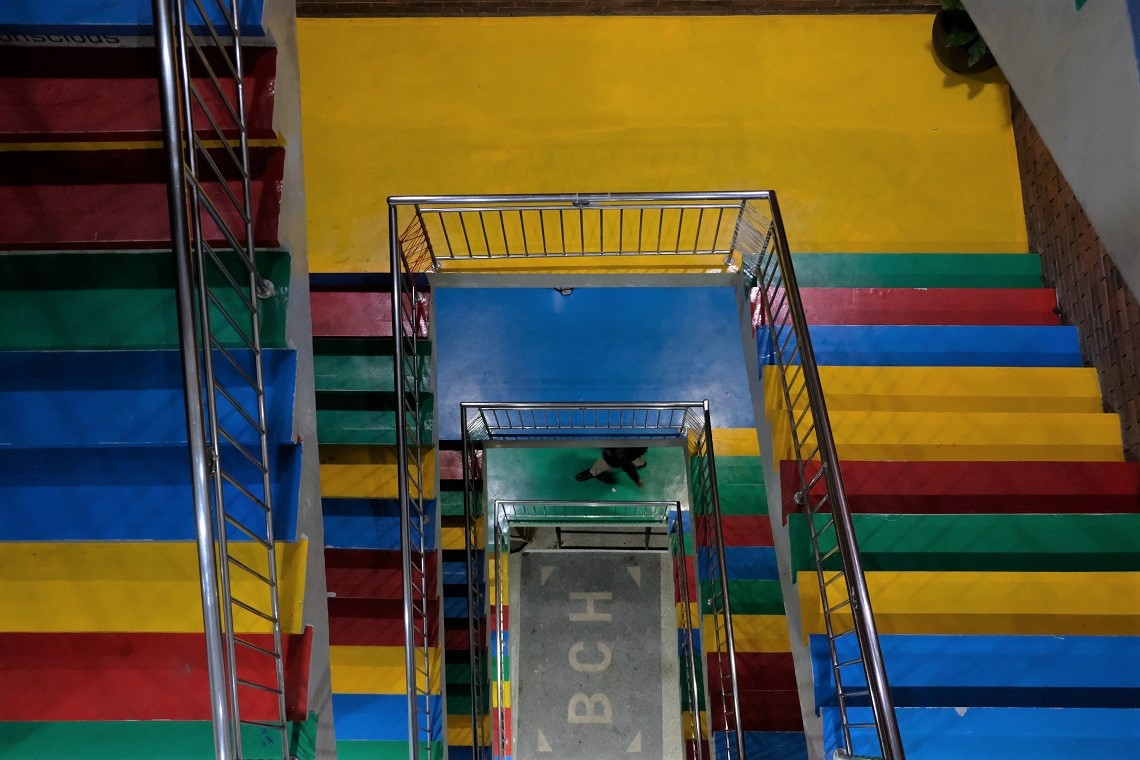
Thank you for introducing us to Indonesian schools of Art. Each of those images is a tradition in itself. ‘Nightmare’ is truly the pièce de résistance of NuArt.
As always, the autobiographical threads in your travelogues lend a particular flavour to your writings. I am amused to discover certain streaks I share with you. Leave me with a pen and a page and and it is impossible not to find a trellis of abstract lines and shapes that start at the edges and keep moving towards the centre depending on time. 🙂
No wonder, I too love to shoot and blog.
LikeLiked by 2 people
It sounds like you were a lot more methodical that I was. 🙂 After a period of doodling, there was a time when I was more drawn into sketching skyscrapers and bizarre-looking structures. I wonder what would happen if I studied architecture or graphic design in university instead of engineering physics.
Thanks for sharing your thoughts, Umashankar!
LikeLike
Really, really liked NuArt. I’ve been to the Tate Modern a few times and I’ve always ended leaving thinking “what a crock of shite”, for nothing I saw there actually made me feel as if the artist had to have any special talent to craft that art. Those sculptures, instead, not only had a meaning for me but also looked like something somebody with real talent had to make. The same goes for Lawangkala in Selasar Sunaryo. It was splendid.
LikeLiked by 1 person
The very topic you mentioned here is in fact the main theme for my next post, because just like you, I often struggle to see the beauty of many modern artworks, until I went to Jogja (the other city I mentioned briefly in this post) last month to visit a very interesting art showcase.
LikeLiked by 1 person
I love the range of beauty you’ve shared here
LikeLiked by 1 person
Thanks for reading, Beth! If only I had more time in Bandung, I would’ve gone to more art galleries, which from the photos looked very intriguing.
LikeLiked by 1 person
Wow! Fragments of Borobudur is haunting and who wouldn’t be tempted to spend longer in the fish trap entrance? Sadly, Vancouver has the worst art gallery I’ve ever visited. I feel deprived, so am looking forward to my visit to Melbourne at the end of the year for visits to the galleries there.
LikeLiked by 1 person
Walking inside that fish trap, or time tunnel, really is one of the most exhilarating yet sobering experiences I’ve ever had with modern art. I think you’ve mentioned before about how uninspiring Vancouver art galleries are, which for me is still surprising given the city’s supposedly cosmopolitan nature. Speaking of Melbourne, oh how I miss the city and its art scene!
LikeLiked by 1 person
I’m so impressed by the art spaces (and artists) here! I loooove the tunnel, and the “Rebellious” sculpture really grabbed me, too. Like you, I have an art-loving mom and a dad that tolerates it! We grew up going to museums, and despite feeling rebellious ourselves at the time, we all ended up with an appreciation for and knowledge of the arts as a result. I thank my mom for that often!
LikeLiked by 1 person
Imagine walking through that narrow opening — you actually have to crouch and squeeze in your body to fit into it — then find yourself in a very serene setting. You keep walking, and you start hearing this faint melodies of a traditional bamboo flute, while on your right you see a dark reflection pool. Then you come across that fish net with an ambient sound that reminds you of a small hut in a lush village where a pristine river flows. It was sooo peaceful!
I think last year I told my mom if she lived in Jakarta she could start her own Javanese dance class for today a lot of people in this big city are interested in learning traditional art as an antidote to the fast-pace life they have to endure.
LikeLiked by 1 person
I love how this series is introducing me to Bandung. What a wonderful way to explore the city through your images and words. As always, I am amazed at how much information you pack into your posts. Thank you for putting so much time and effort into creating them, Bama, as it allows for a much deeper and satisfying experience.
LikeLiked by 1 person
My pleasure, Jolandi. Traveling abroad helps me appreciate more the beauty and imperfections of cities in my home country. Bandung, for instance, is a place that can appear off-putting at first sight — it’s often congested and the streets can be disorienting. However, its charm lies in the details.
LikeLike
For me the charm of most places actually lies in the details, Bama, and that is perhaps why I enjoyed these two posts so much. It really is interesting how traveling changes the way we see and experience our home countries.
LikeLiked by 1 person
Absolutely! That’s why I always encourage my friends who’ve never been abroad to travel outside Indonesia despite the many interesting places to explore within the country.
LikeLiked by 1 person
Absolutely stunning!
LikeLiked by 1 person
Indeed. Thanks for dropping by, Debbie!
LikeLike
Pingback: ARTJOG 2019: A Retrospective | What an Amazing World!
This post takes me down the memory lane :’). Bandung’s creative space is my favorite, and I love each one of them. I didn’t realize about the different characteristics between Bandung and Jogja, but after reading this, it feels like it should’ve been obvious. This is a very informative and insightful post, thank you for sharing 🙂
LikeLiked by 1 person
Hi Dixie! Thanks for reading, and I’m glad you enjoyed this post as much as I enjoyed my trip to Bandung back in February. It’s always nice to revisit places that have past connections with you, and with Bandung it’s quite interesting to see how much the city has changed since I left it for Jakarta 11 years ago. Last month there was a citywide art event held in Bandung which I really wanted to see, but unfortunately I didn’t have the time to go there.
LikeLike
It is a credit to Bandung itself that so many of the creative-minded students who graduate from its universities choose to stay and develop their artistic careers in the city. I really enjoyed hopping between the art galleries back in February and I suppose there were upsides to going at the height of rainy season – like having the fish-trap installation at Selasar Sunaryo all to ourselves! I only wish Bandung Creative Hub lived up to its original purpose… it just felt kind of “dead” after all the other places we visited.
LikeLiked by 1 person
I already knew that Bandung has so many talents when it comes to music. But only after our trip to the city in February did I realize that it really is a hub for Indonesian contemporary artists. The wide spectrum of talents in the city is mind-blowing, and I wish we had more time to explore more art galleries and creative centers there. Selasar Sunaryo without the people was such a bliss!
LikeLiked by 1 person
Love the fish trap most of all. Very surreal feeling it must be. I can imagine that it gives a feeling of comfort rather than suffocation. And what a delightful space to while away a few hours. The sculptures are incredible.
LikeLiked by 1 person
That was also my favorite art installation in Bandung. There was a similar work from the same artist that was on display in ArtJog 2019. However, since the latter had a much bigger crowd, somehow it lost its magic that got me so captivated when I saw it in Bandung several months earlier.
LikeLike
Bama, now you’ve not just completely changed my opinion of Bandung, you’ve made me want to visit again. The art scene looks amazing, and even in the rain, the city surrounded by the lush greenery looks lovely. I think it’s a terrific balance enjoying the arts while your current career is finance focussed.
LikeLiked by 1 person
And those are only a few art spaces in the city that you can explore, Caroline. I’ll write more about the city’s art galleries and creative workshops when I get the chance to explore them, hopefully in the near future. You’ve got me thinking — maybe it is because of what I do for a living that makes me enjoy the arts so much.
LikeLike
What a thriving art scene! I have never thought that a fish trap can be transformed into a work of art 🙂 Simply brilliant!
LikeLiked by 1 person
The artist truly is a genius. He’s one of those people who can see profound meaning of things beyond their physical appearance.
LikeLiked by 1 person